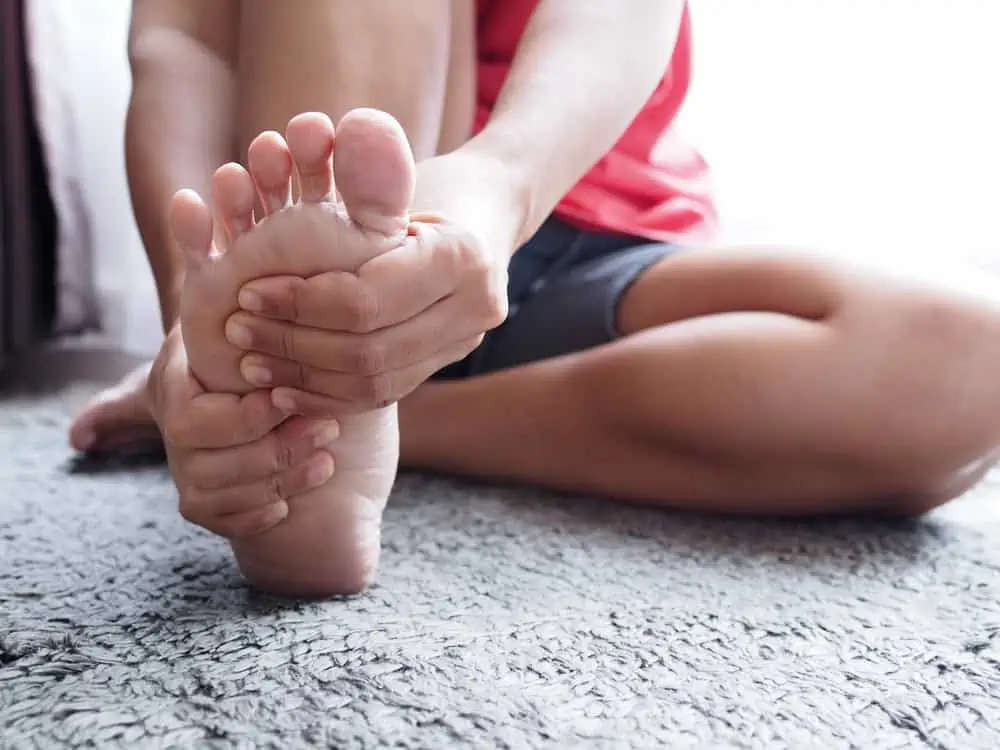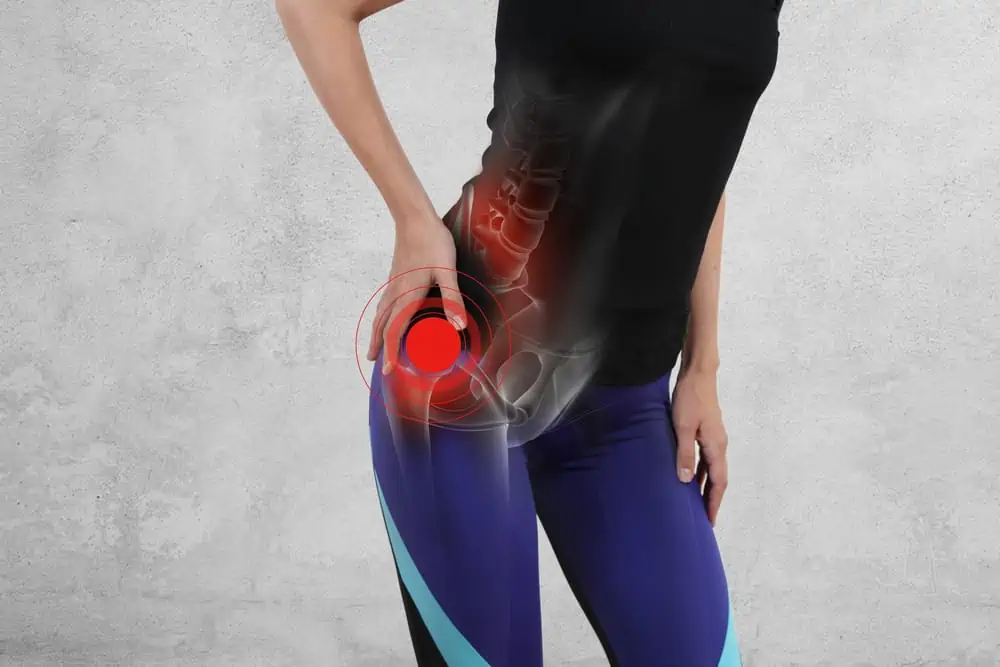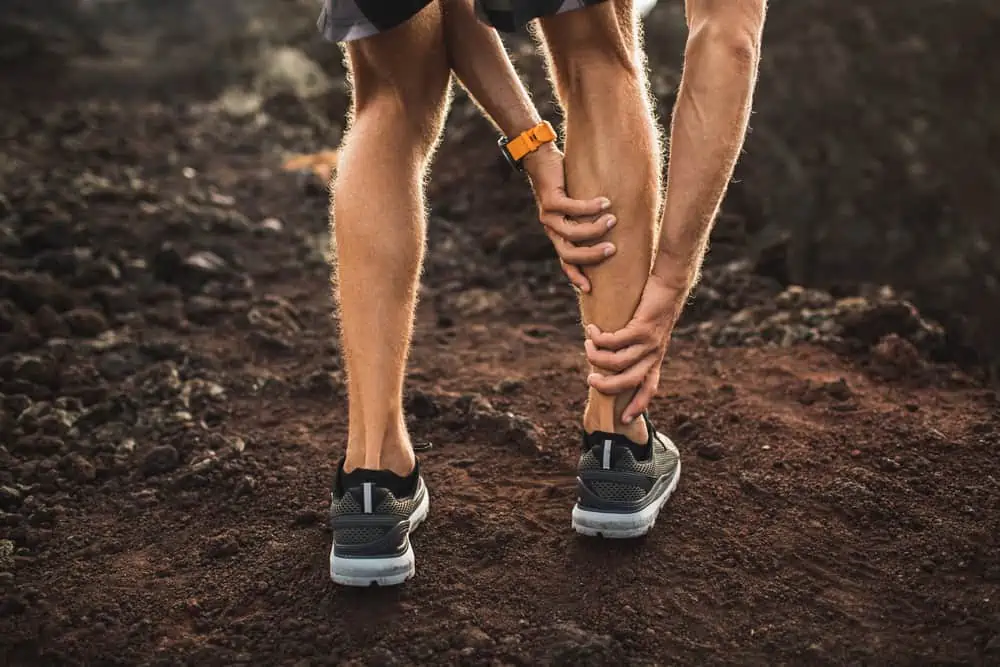This post may contain affiliate links. If you click through a link and make a purchase, I may receive a commission at no additional cost to you. As an Amazon Associate, I earn from qualifying purchases. Read the full disclosure here.
Between crossing multiple time zones, minimal sleep, questionable food choices, and being packed into your airplane seat like a sardine, long-haul flights take a toll on you both physically and mentally.
The human body hates being still for long hours on end. After your second full-length feature film, chances are you’re feeling a little achy.
Just like food snacks, the body needs movement snacks.
Breaking up hours of sitting with some simple stretching and mobility exercises can help you feel better throughout the flight and when you land.
Here are 12 in-flight stretches for long plane rides (that won’t make you look like a weirdo while you’re doing them).
After you land, check out my Post-Flight Gentle Yoga practice, targeting all the areas that get achy and cramped with long flights.
Disclaimer: This content is for educational purposes and is not medical advice. Read the full disclaimer.
In-flight stretches for long plane rides
This section is broken down into seated and standing stretches.
Use caution with standing exercises if there’s turbulence.
Sometimes there’s a bit of space by the bathrooms or in the back of the plane as long as the flight attendants don’t mind.
Most seated stretches can also be done standing if you’re taller or have a seat neighbor that’s not cool with your exercises.
*Friendly PSA – Not all movements feel great for everyone. Please listen to your body and always follow the advice of your healthcare providers. Please use caution with standing exercises and don’t perform them if it’s a bumpy ride or otherwise unsafe.*
Seated cat-cow
Slumping down in your seat keeps the lumbar spine flexed, causing feelings of muscle tension over time.
Seated cat-cow mobilizes the spine through flexion and extension and can help ease back tension with prolonged sitting.
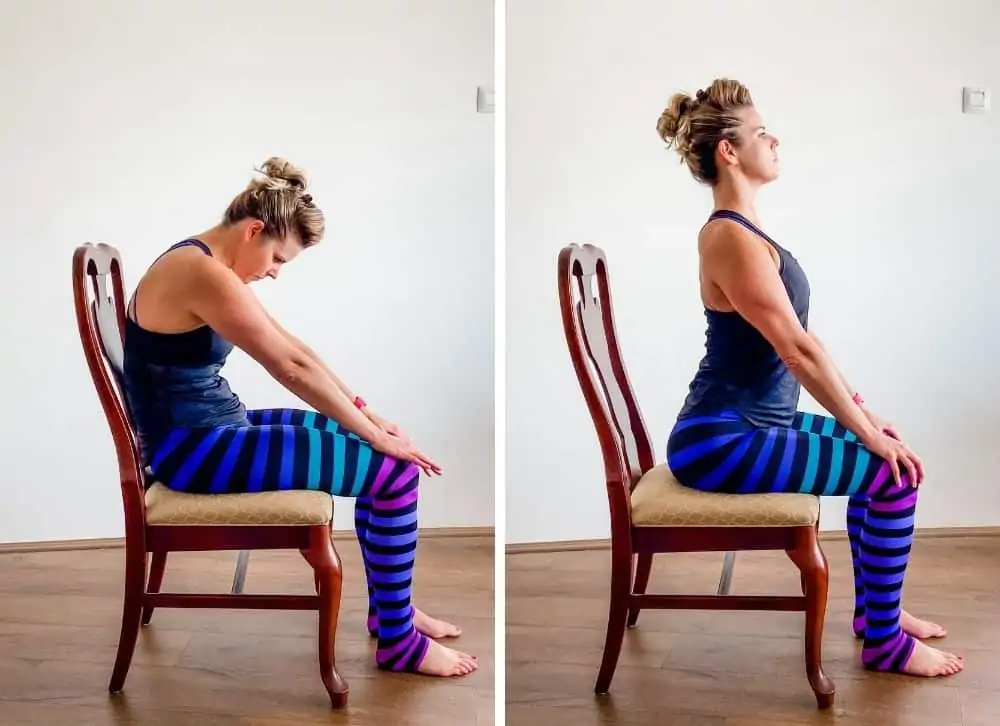
How to perform:
- Place your hands on your thighs or clasp behind your neck
- Round your spine, tucking the chin down toward your chest as you exhale
- Inhale and sit up tall, arching the spine and gently gazing upward
- Repeat through this cycle at your own pace for 5-10 repetitions
- Repeat as needed
To improve sitting posture and alignment during the flight, ask for a pillow or blanket to place in the small of your back to use as a lumbar support to maintain good posture.
For some additional support, look into this inflatable travel lumbar support pillow.
Seated twist
Seated twist mobilizes the thoracic and lumbar spine into rotation.
There are two options here, a lighter version keeping the body upright, or a deeper twist (if you have space).
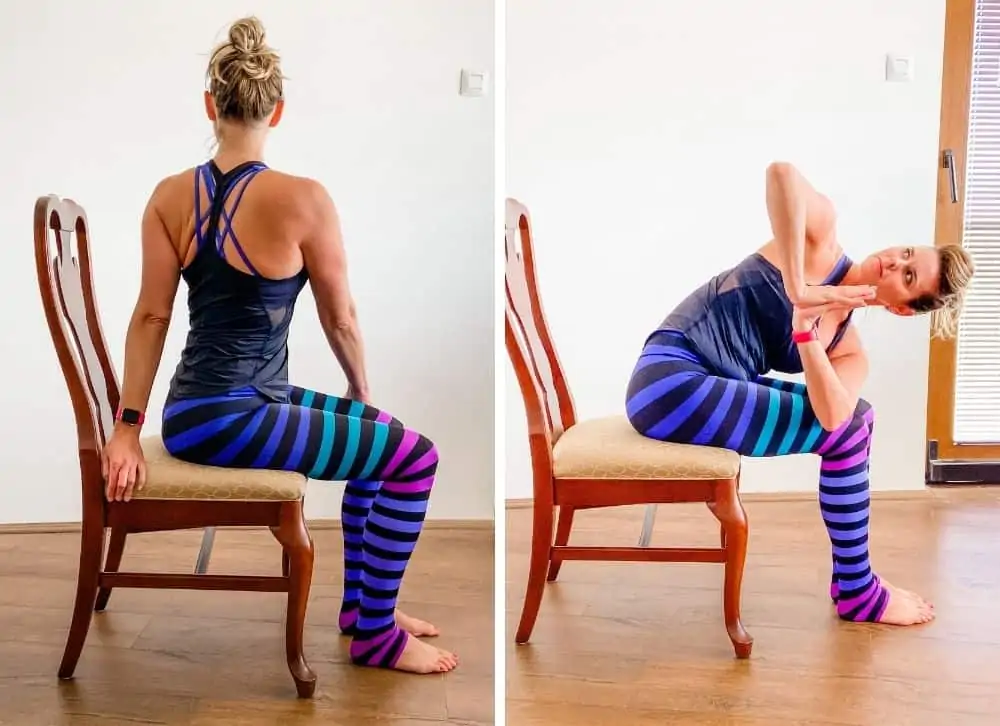
How to perform:
- Sit up tall and gently rotate toward the right, reaching your right arm behind and your left hand to the opposite knee
- Use your hands to pull you further into rotation if you’re looking for a deeper stretch
- Pause here to take a deep breath as you inhale and slowly exhale
- Release and switch to the other side
- Repeat 5-10 times each side as needed
Seated shoulder extension
With prolonged sitting, slumping, and smart device usage, the shoulders can stay rounded for quite some time on a long flight.
Shoulder extension helps stretch the shoulders in the opposite direction.
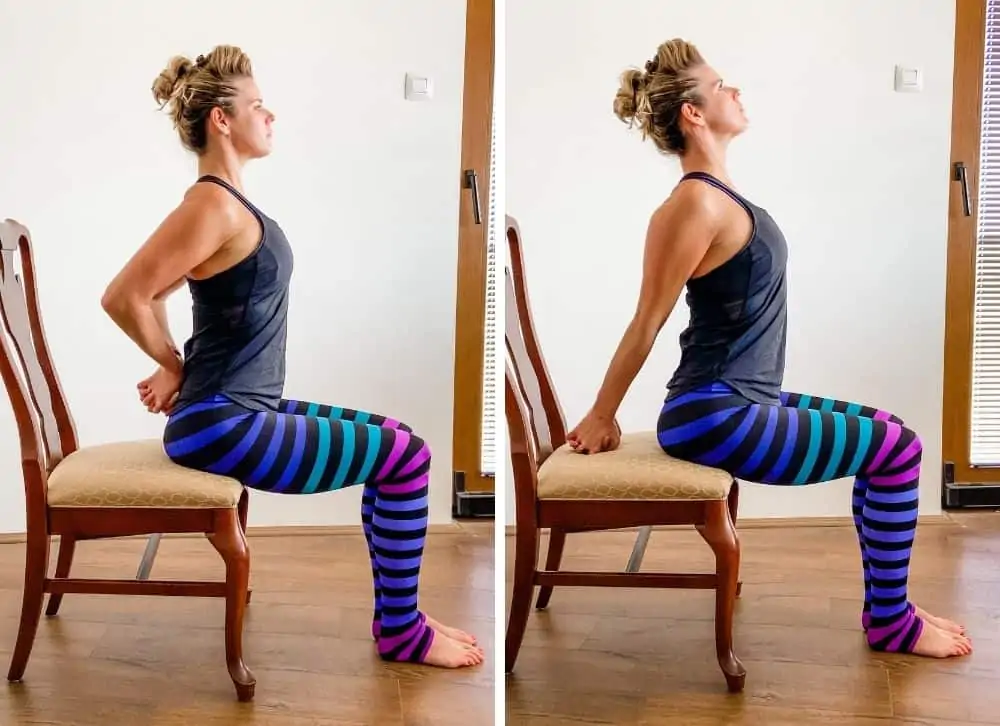
How to perform:
- Place your hands at the small of your back, clasping hands together if comfortable
- Take a deep inhale and gently squeeze the shoulder blades together, opening up the chest and front of the shoulders.
- To take this further, lift the hands a few inches off of the low back.
- Hold for 5-10 seconds
- Repeat 5-10 times as needed
Seated triceps and lat stretch
If you can reach overhead, you can stretch the triceps and even the lats right in your seat.
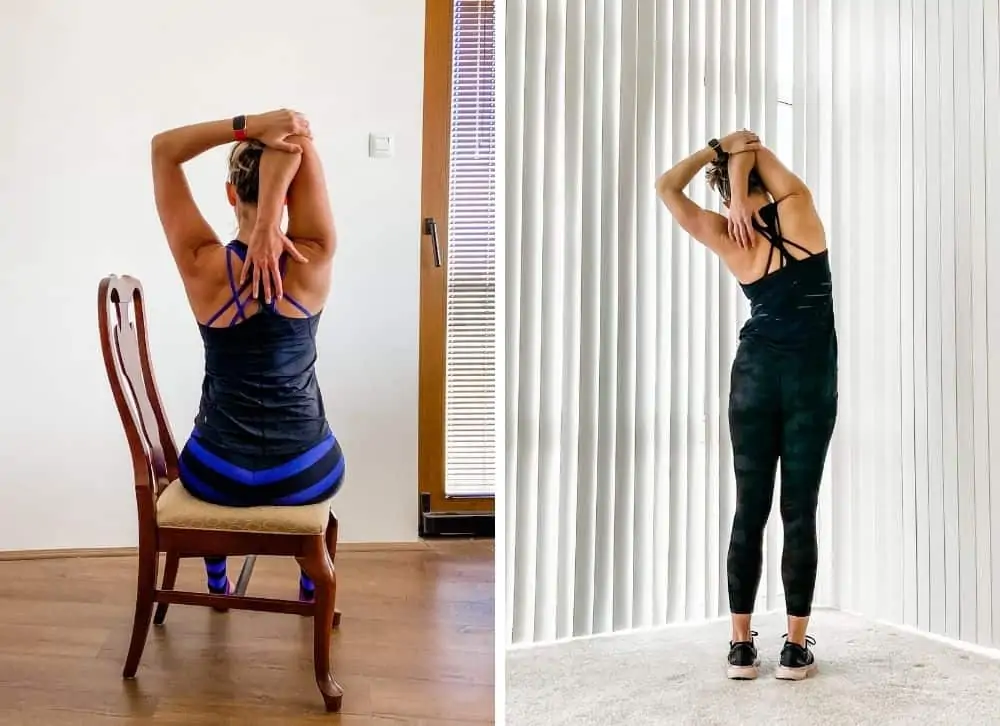
How to perform:
- Reach behind your neck
- Gently pull on the elbow with the opposite side
- To add a lat stretch, gently side bend your upper body toward the opposite side.
- Hold for 20-30 seconds
- Repeat 2-3 times
Seated calf raises
For long flights, it’s essential to get some movement into your legs to avoid risk for a blood clot.
Seated calf raises or ankle pumps can help blood flow even when you can’t stand up.
How to perform:
- Place your feet flat on the floor
- Raise up on your toes
- Return your heels to the floor
- Repeat for 30-60 seconds every 30-60 minutes or as needed
Alternatively, you can lift your feet a few inches and pump your ankles, alternating between flexing and pointing your feet.
If you’re at risk for a DVT (deep vein thrombosis), consider wearing some compression socks during the flight and taking regular standing breaks to walk and move.
Seated figure 4 hip stretch
Seated figure 4 stretch helps relieve tight muscles in the hips and low back.
If you’re taller, you might not have room for this stretch at your seat unless you’ve scored an aisle seat or your neighbor is up and about.
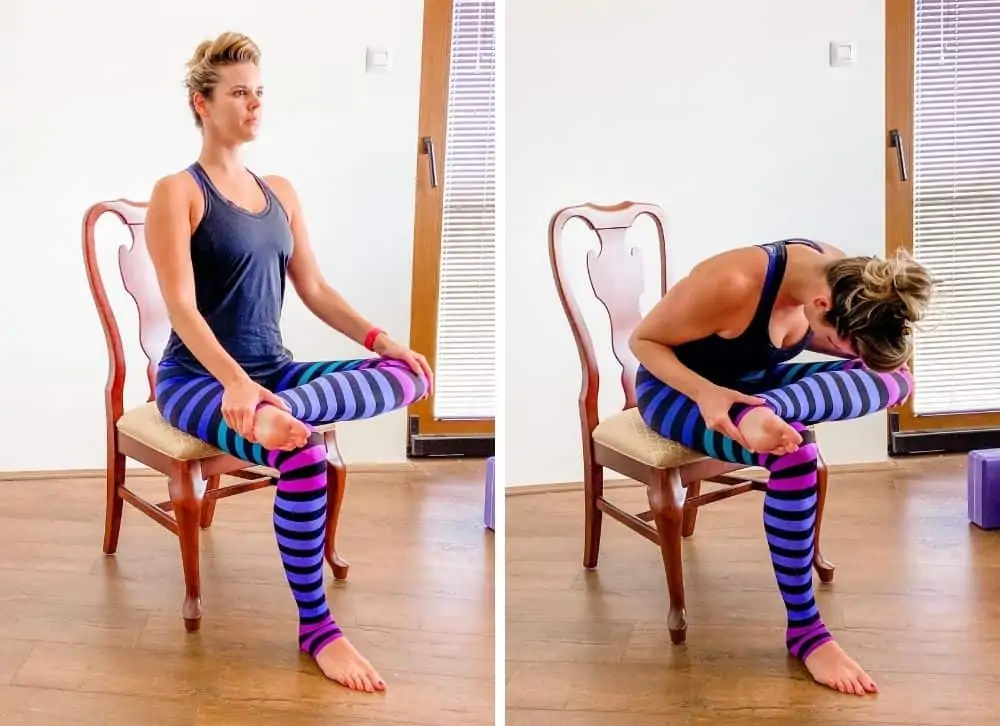
How to perform:
- Sit up tall and cross one ankle over the opposite knee
- Flex the foot to keep the knee in good alignment and avoid twisting the joint
- Keeping your chest upright, hinge from the hip and gently lean forward until you feel a comfortable stretch in your hip.
- Switch legs and repeat as needed, holding for 20-30 seconds.
Seated neck extension
If you downloaded plenty of movies to watch along the way, chances are text neck will start to creep in.
Neck extension is a gentle mobilization to give the joints and soft tissues a break from constant flexing.
Extension mobilization helps maintain the natural curve of the neck and also alleviates pressure on spinal discs.
If you’ve ever been advised to avoid neck extension, then this exercise is not for you.
For more exercises specific to text neck, check out this article and this yoga for text neck practice.
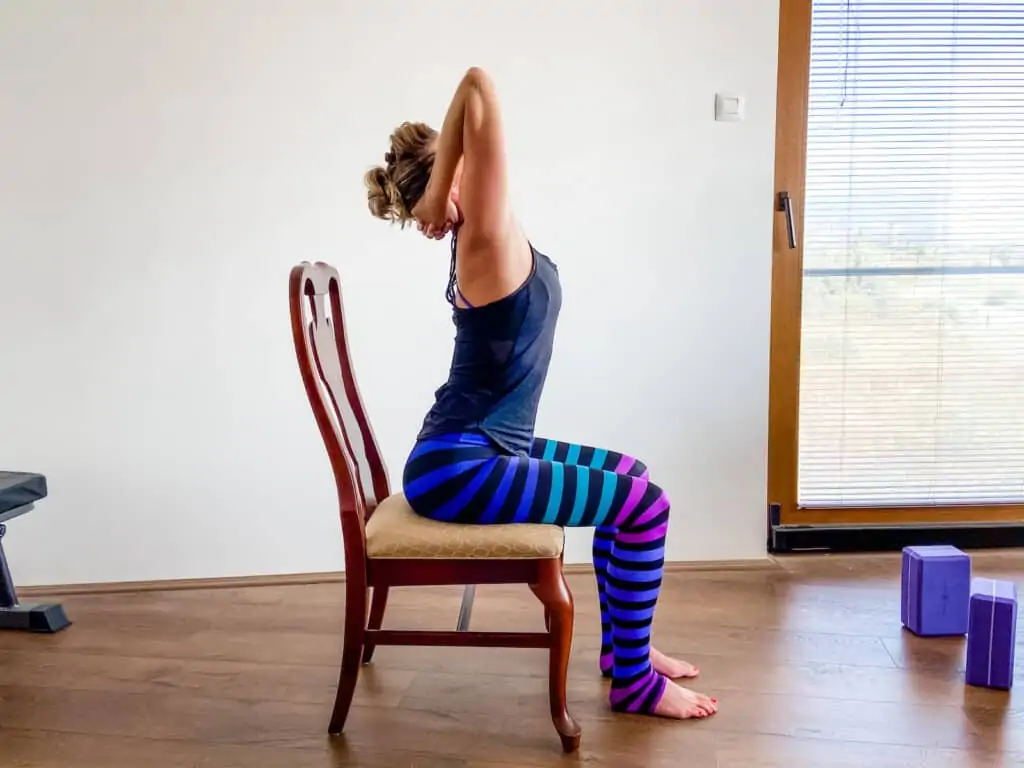
How to Perform:
- Cradle your head in your hands
- Gently look up toward the ceiling, extending your neck and supporting your head
- Return to a neutral position
- Repeat 5-10 times as needed
You can also use a scarf for a deeper mobilization like the one in the video below.
Be sure to use a travel neck pillow that doesn’t pitch your head forward, such as the TRTL travel pillow or the Travel Rest Nest Memory Foam pillow.
Both of these pillows have a flat back and can provide more comfortable support to your neck, especially if you can’t recline your seat.
The Tempurpedic peanut pillow is another one of my favorite options that can function as a neck roll or lumbar support.
Check out How To Relieve Neck Pain From Sleeping Wrong for more travel tips on keeping neck pain at bay.
Standing calf stretch
This is also a great stretch to do regularly for those dealing with plantar fasciitis.
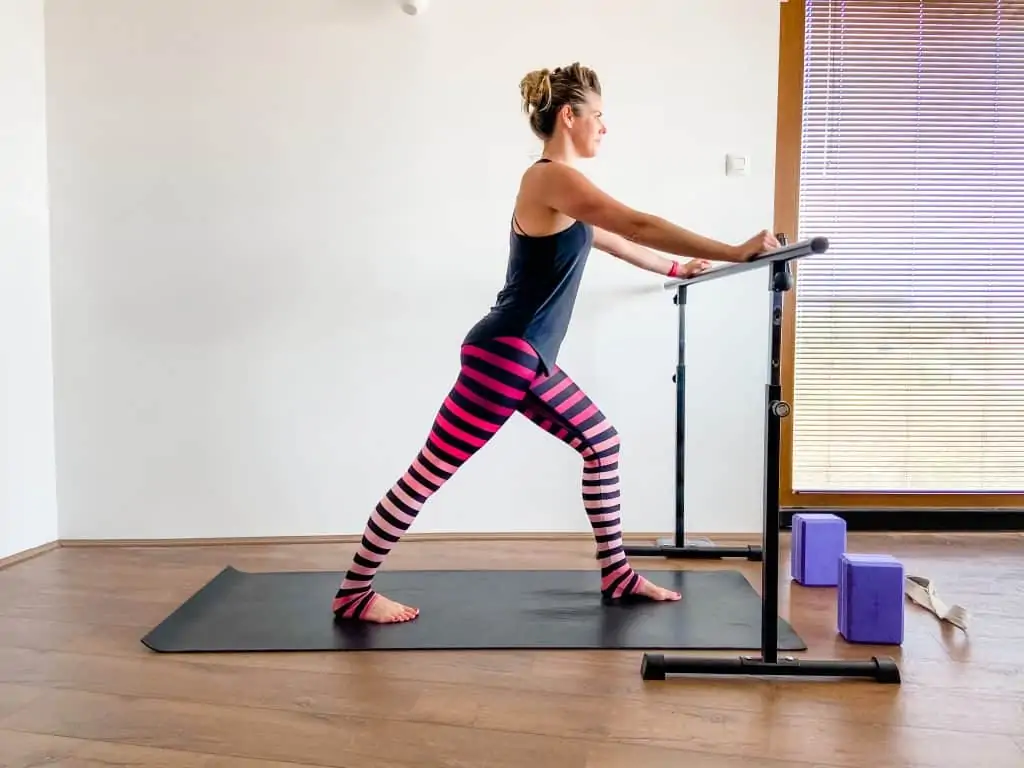
How to perform:
- Stand near a seat back or wall and take a long step backward with the leg you wish to stretch.
- Place your hands on the wall and press deeply into the back heel, keeping the knee extended.
- Adjust your stance to a comfortable length that works for you.
- Hold 20-30 seconds
- Repeat as needed
Standing quad stretch
One of the four muscles that make up the quadriceps crosses the hip joint, contributing to the feeling of hip tightness with prolonged sitting.
This exercise requires some balance, which can be tricky on a bumpy ride.
I recommend holding on to something stable and/or skipping this one if it’s not safe.
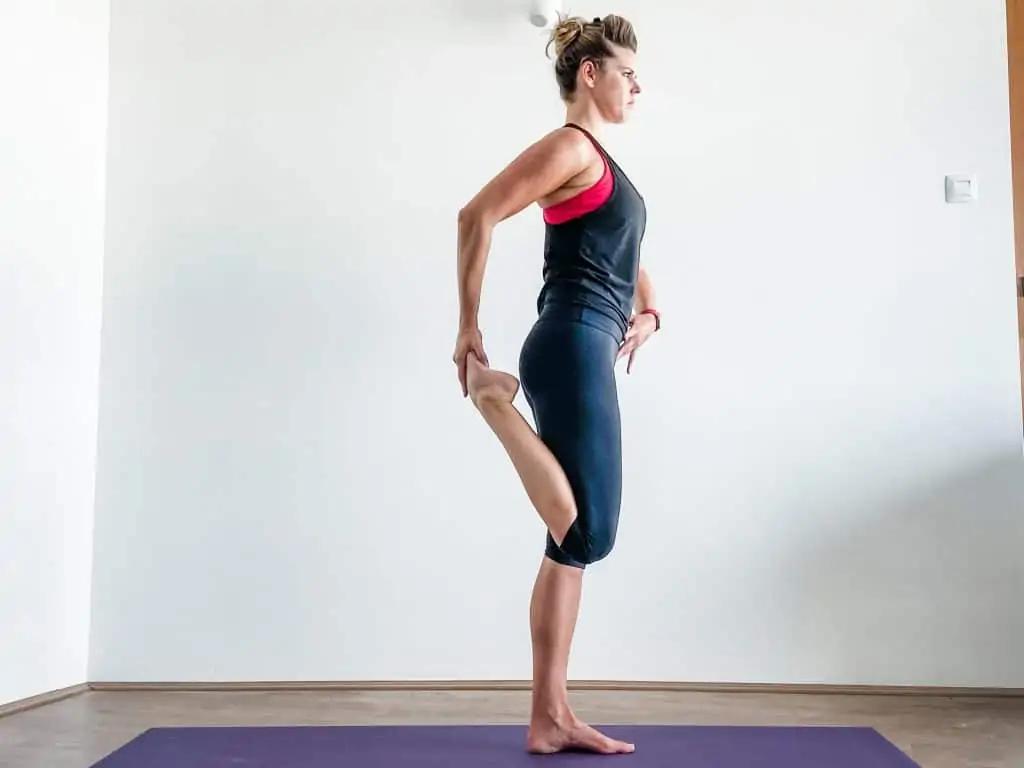
How to perform:
- Get your balance by holding on to something stable.
- Bend one knee and grab the foot or back of your shoe and gently pull toward the glutes.
- Don’t allow the knee to drift away from the body; try to keep it in line with the standing leg for best alignment.
- Hold for 20-30 seconds.
- Repeat as needed
Standing hip flexor stretch
Prolonged sitting can start to make the hip flexors feel tight, resulting in low back discomfort.
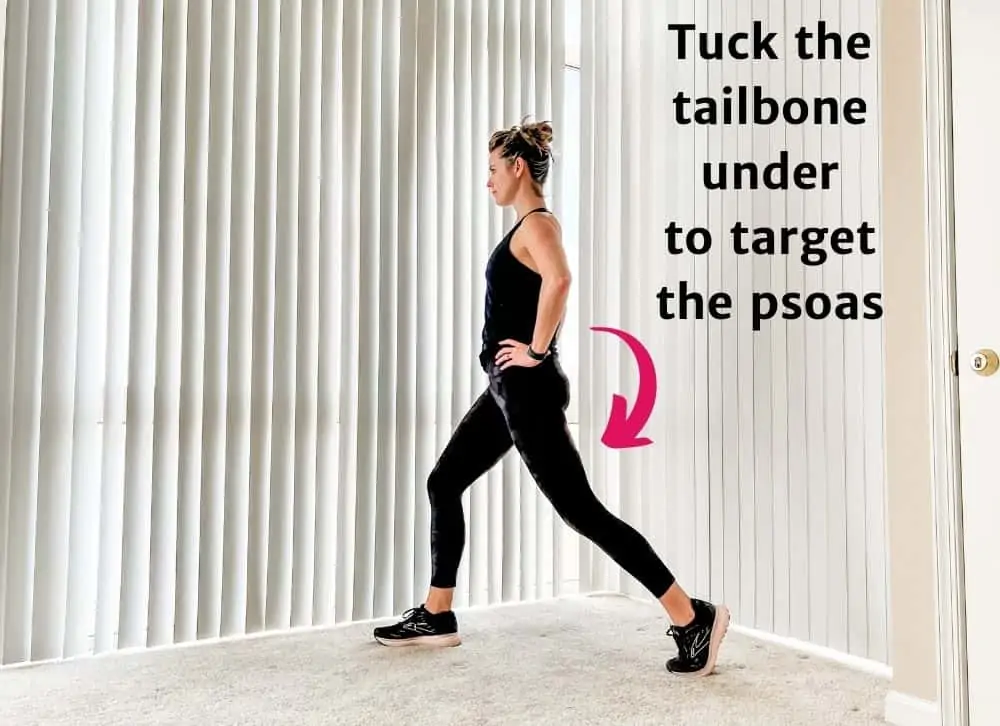
How to perform:
- Place one foot forward and one foot back as if coming into a lunge stance (the back leg is getting the stretch)
- Drop down into a modified lunge and tuck the tailbone under, moving into a posterior pelvic tilt.
- Hold for 20-30 seconds, repeat as needed
A common mistake is taking a longer stance and arching the back. While this stretch might feel good, it doesn’t target the psoas muscle, which is one of the main hip flexor muscles.
Tucking the tailbone and slightly rolling the hips under helps to stretch this area.
If you feel like your hip flexors are always tight, don’t miss this article on how to fix tight hip flexors.
Standing lumbar extension
With prolonged sitting, the lumbar spine spends most of the time in a flexed position.
This results in low back discomfort for just about anyone but can be exceptionally painful for anyone with a herniated disc or certain conditions causing sciatica.
Standing extension helps to mobilize the lumbar spine in the opposite direction and create space for the intervertebral discs.
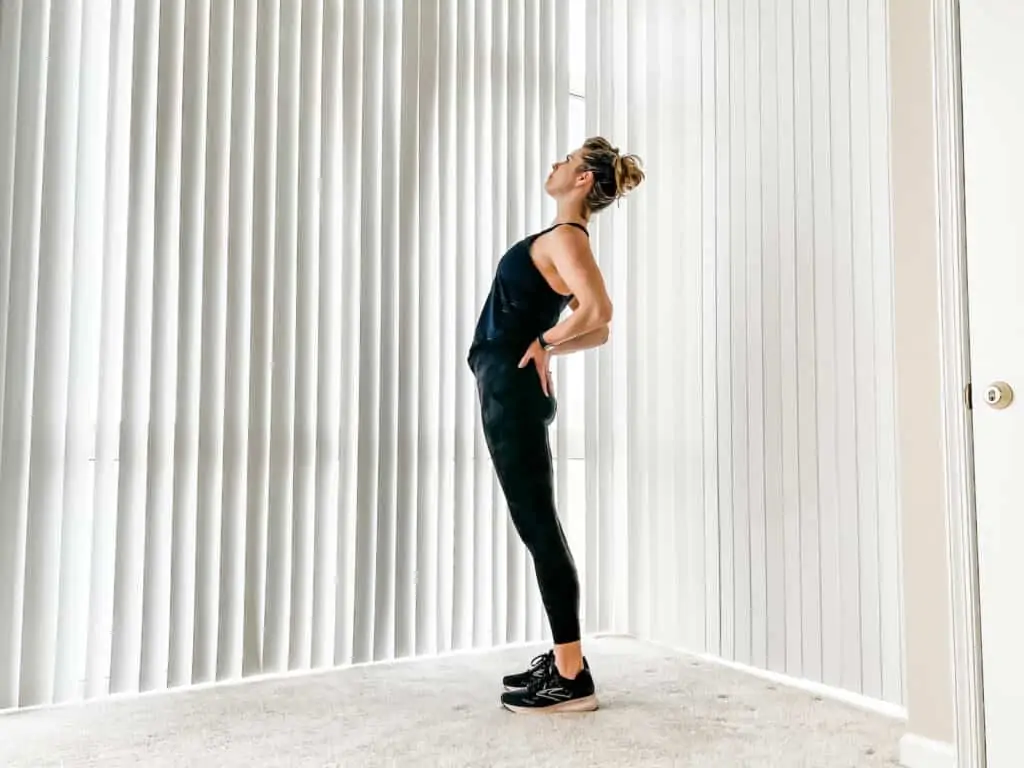
How to perform:
- Stand with your feet hip-width apart and place your hands on your lower back
- Gentle arch the back and press the hips forward without bending the knees
- Slowly return to a standing position
- Repeat 10 times as needed
Standing side bend
Standing side bend stretching is another easy way to open up the spine when you’re short on options.
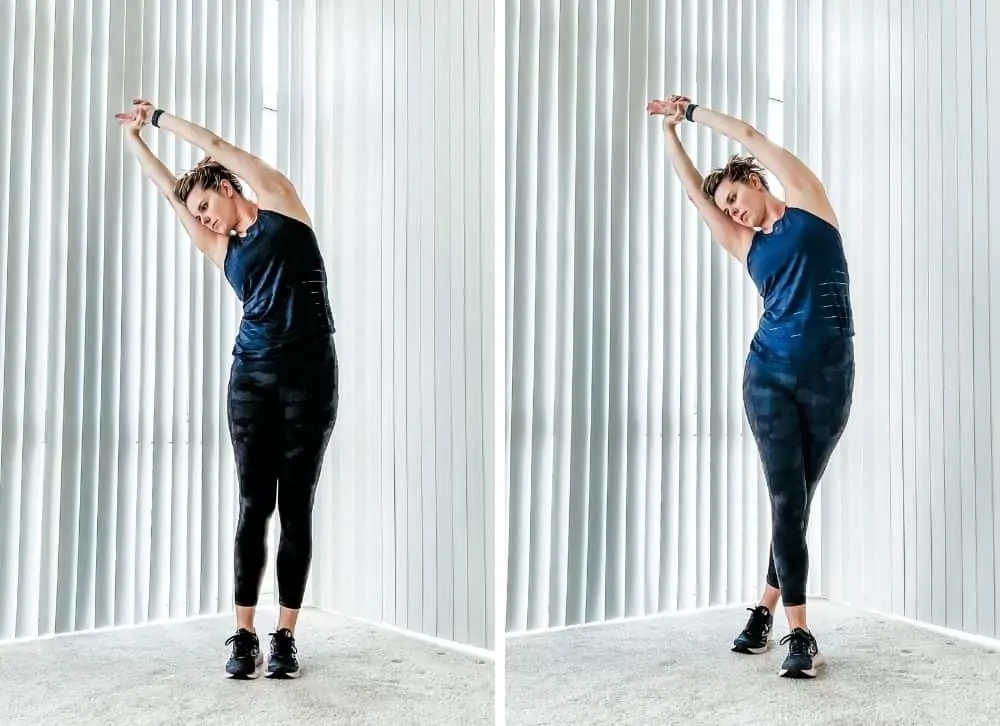
How to perform:
- Standing with feet together or hip-width distance and reach overhead
- Gently bend to one side, pressing the hips toward the opposite side
- Hold for 5-10 seconds
- Repeat as needed on both sides
- Option to cross the opposite leg behind to deepen the stretch
Please note, many in the fitness industry refer to the second option as an “IT Band stretch,” and this is not even remotely true.
(It’s actually not possible to stretch the IT Band.)
If you’re dealing with IT Band pain, check out this article outlining plenty of options that can help.
Standing downward dog
Yes, you can do a modified standing version of a downward-facing dog, and it feels ah-mazing when you’re stuck on a plane.
This stretch helps relieve tension in the lower back and hamstrings.
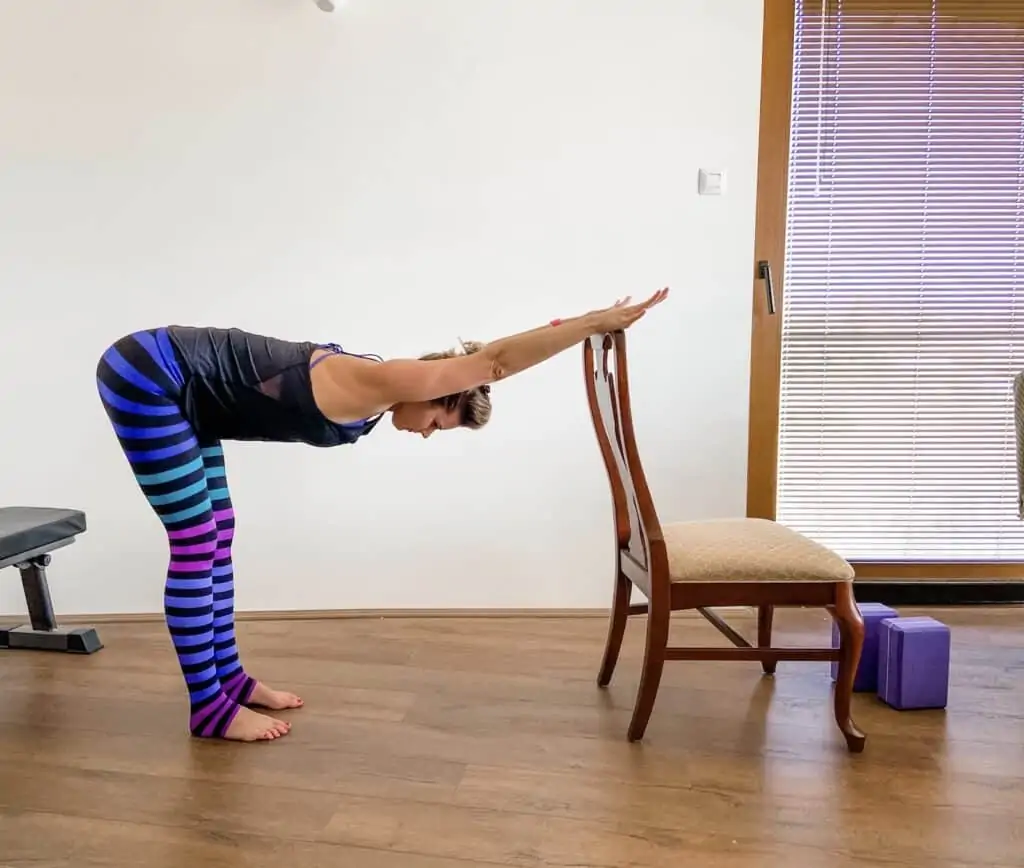
How to perform:
- Stand a few feet away from a wall or partition
- Place your hands on the wall and bend forward at the waist, sending your hips back as if you’re making the letter L.
- Hold for 10-20 seconds
- Repeat as needed
Post-long haul flight stretching
After you land, try a gentle stretch practice targeting areas that get tight with a long flight. Check out my post long-haul flight yoga stretch practice.
This practice is just the right speed to tackle jet-lagged aches and pains after your next international flight.
Wrapping up
Long flights are tough but that doesn’t mean you can’t grab some healthy movement along the journey.
Save this article for your next long plane ride to help you make it through just a bit more comfortably.
Don’t forget to join me on YouTube when you land for more yoga practices to work out the kinks.
Safe travels!


